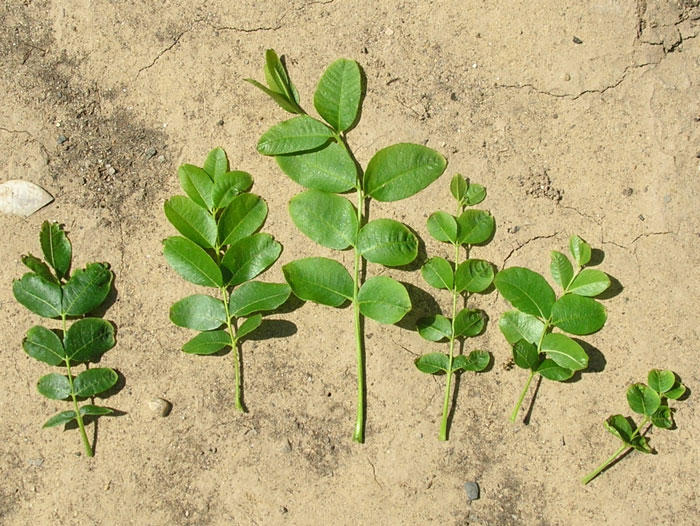September 30, 2015

Although nickel deficiency in pecans is fairly common in some orchards, associated ‘mouse ear’ symptoms can be corrected with foliar applications of the micronutrient, university Extension specialists report.
“We see symptoms of nickel deficiency commonly in sandy, gravelly, shallow, or highly calcareous soils, including caliche clay," said Richard Heerema, New Mexico State University Extension pecan specialist based in Las Cruces.
“When you begin seeing mouse ear symptoms on very young leaves, a spray will not fix mouse-eared leaves but the new growth will look healthier."
Whether the improvement in appearance translates to better overall tree health is an unanswered question, says Jim Walworth, University of Arizona Extension soil specialist based in Tucson.
“We see trees with very low nickel levels that don’t have symptoms,” Walworth said. “It's not really clear what leaf levels the grower should target.”
“Whether growers should make a nickel application if they have nickel deficiency is an even harder question. I'm not sure if the deficiency is really damaging the trees.”
Walworth is involved in a research project to gain a better understanding of the role of nickel in tree health and yield. Since pecans are slower to bear fruit, he says production results are still a few years off.
Nickel is needed in small amounts to activate the enzyme urease which helps mobilize nitrogen within the pecan tree. Without adequate nickel levels, spring foliage may be sparse, bud break may be slowed, leaflets may be small and rounded resembling mouse ears, and the wood can be brittle.
The malady is more pronounced in younger trees plus those in sandy or high-lime content soils, or trees growing in colder growing areas, including in New Mexico’s Valencia and Quay counties.
Heerema sees scattered cases of mouse ear in orchards in New Mexico’s Mesilla Valley. The nutrient deficiency is more commonly found in eastern New Mexico and Texas.
As with many other micronutrients, he notes that soil samples will not provide an accurate picture of nickel availability for tree uptake.
“With all metal nutrients - zinc, copper, iron, manganese, and nickel - they become unavailable in high pH soils and calcareous soils in the southwestern U.S.,” Heerema said.
Although lab results from leaf samples may provide information about deficiencies of several nutrients, the usefulness of nickel data is still viewed as questionable.
“We don’t have a very good interpretation of leaf analysis (for nickel),”" Walworth said. “We haven't pinned down the acceptable levels yet.”
For growers who pull samples for laboratory analysis, Heerema says first rinse leaves in a phosphate-free detergent, such as dish soap.
If foliar nutrients were applied before sampling, Heerema recommends running the leaves through a 0.1 percent hydrochloric or muriatic acid solution. Since acid is caustic, he urges growers to wear protective gloves and safety glasses.
Next, the leaves should be rinsed three times in deionized or distilled water, available at many discount stores.
“Cleaning the leaf is very important,” Heerema said.
Nickel levels higher than 2.5 parts per million are considered adequate, according to the NMSU Extension publication, “Diagnosing Nutrient Disorders of New Mexico Pecan Trees.”
In orchards with mild mouse ear symptoms, Heerema says a single foliar nickel application early in the season is typically enough. He has worked with nickel lignosulfonate, and a handful of other nickel sulfate products available on the market.
The nickel lignosulfonate label says the product can be successfully tank mixed with other nutrients or crop protection materials. Yet Heerema has heard from several growers who suggest that applying nickel separately from other materials brings better results.
In severe mouse earring cases, Heerema says growers can apply another foliar nickel treatment about one to two months after the first - timing it to impact the midseason flush. A third treatment, if needed, can be applied in the fall.
The pecan specialist said, “In many cases, a single application in the spring is sufficient.”
With nickel, a late-(season) application can carry over. The demand for nickel is so low and it's required in such small quantities that the amount that can move around and into storage sufficiently to help.
You May Also Like




